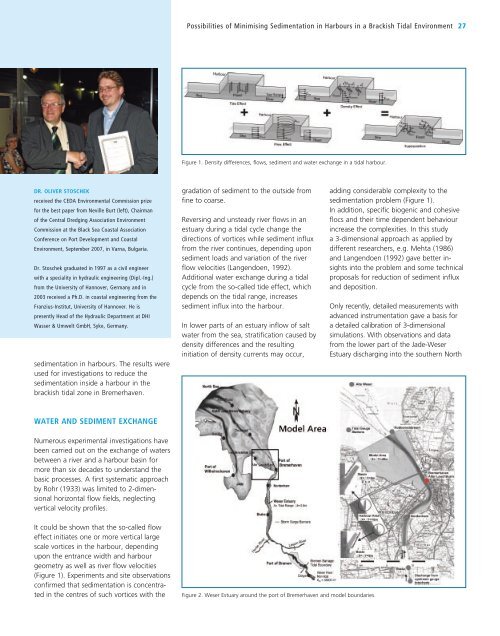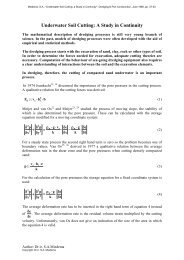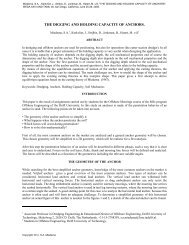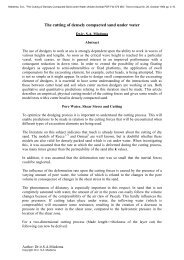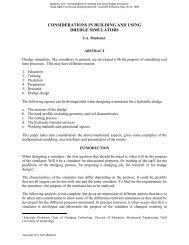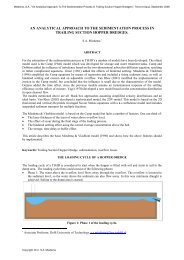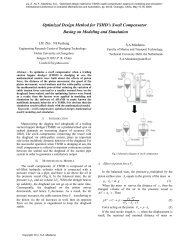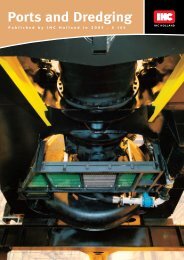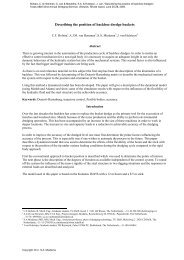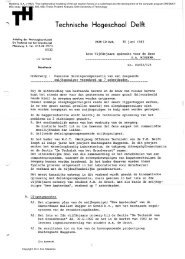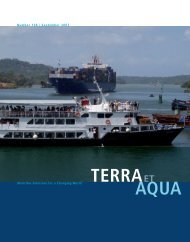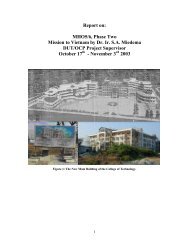The rock manual - Dredging Engineering Research Laboratory
The rock manual - Dredging Engineering Research Laboratory
The rock manual - Dredging Engineering Research Laboratory
You also want an ePaper? Increase the reach of your titles
YUMPU automatically turns print PDFs into web optimized ePapers that Google loves.
Possibilities of Minimising Sedimentation in Harbours in a Brackish Tidal Environment 27Figure 1. Density differences, flows, sediment and water exchange in a tidal harbour.DR. OLIVER STOSCHEKreceived the CEDA Environmental Commission prizefor the best paper from Neville Burt (left), Chairmanof the Central <strong>Dredging</strong> Association EnvironmentCommission at the Black Sea Coastal AssociationConference on Port Development and CoastalEnvironment, September 2007, in Varna, Bulgaria.Dr. Stoschek graduated in 1997 as a civil engineerwith a speciality in hydraulic engineering (Dipl.-Ing.)from the University of Hannover, Germany and in2003 received a Ph.D. in coastal engineering from theFranzius-Institut, University of Hannover. He ispresently Head of the Hydraulic Department at DHIWasser & Umwelt GmbH, Syke, Germany.sedimentation in harbours. <strong>The</strong> results wereused for investigations to reduce thesedimentation inside a harbour in thebrackish tidal zone in Bremerhaven.gradation of sediment to the outside fromfine to coarse.Reversing and unsteady river flows in anestuary during a tidal cycle change thedirections of vortices while sediment influxfrom the river continues, depending uponsediment loads and variation of the riverflow velocities (Langendoen, 1992).Additional water exchange during a tidalcycle from the so-called tide effect, whichdepends on the tidal range, increasessediment influx into the harbour.In lower parts of an estuary inflow of saltwater from the sea, stratification caused bydensity differences and the resultinginitiation of density currents may occur,adding considerable complexity to thesedimentation problem (Figure 1).In addition, specific biogenic and cohesiveflocs and their time dependent behaviourincrease the complexities. In this studya 3-dimensional approach as applied bydifferent researchers, e.g. Mehta (1986)and Langendoen (1992) gave better insightsinto the problem and some technicalproposals for reduction of sediment influxand deposition.Only recently, detailed measurements withadvanced instrumentation gave a basis fora detailed calibration of 3-dimensionalsimulations. With observations and datafrom the lower part of the Jade-WeserEstuary discharging into the southern NorthWATER AND SEDIMENT EXCHANGENumerous experimental investigations havebeen carried out on the exchange of watersbetween a river and a harbour basin formore than six decades to understand thebasic processes. A first systematic approachby Rohr (1933) was limited to 2-dimensionalhorizontal flow fields, neglectingvertical velocity profiles.It could be shown that the so-called floweffect initiates one or more vertical largescale vortices in the harbour, dependingupon the entrance width and harbourgeometry as well as river flow velocities(Figure 1). Experiments and site observationsconfirmed that sedimentation is concentratedin the centres of such vortices with theFigure 2. Weser Estuary around the port of Bremerhaven and model boundaries.


